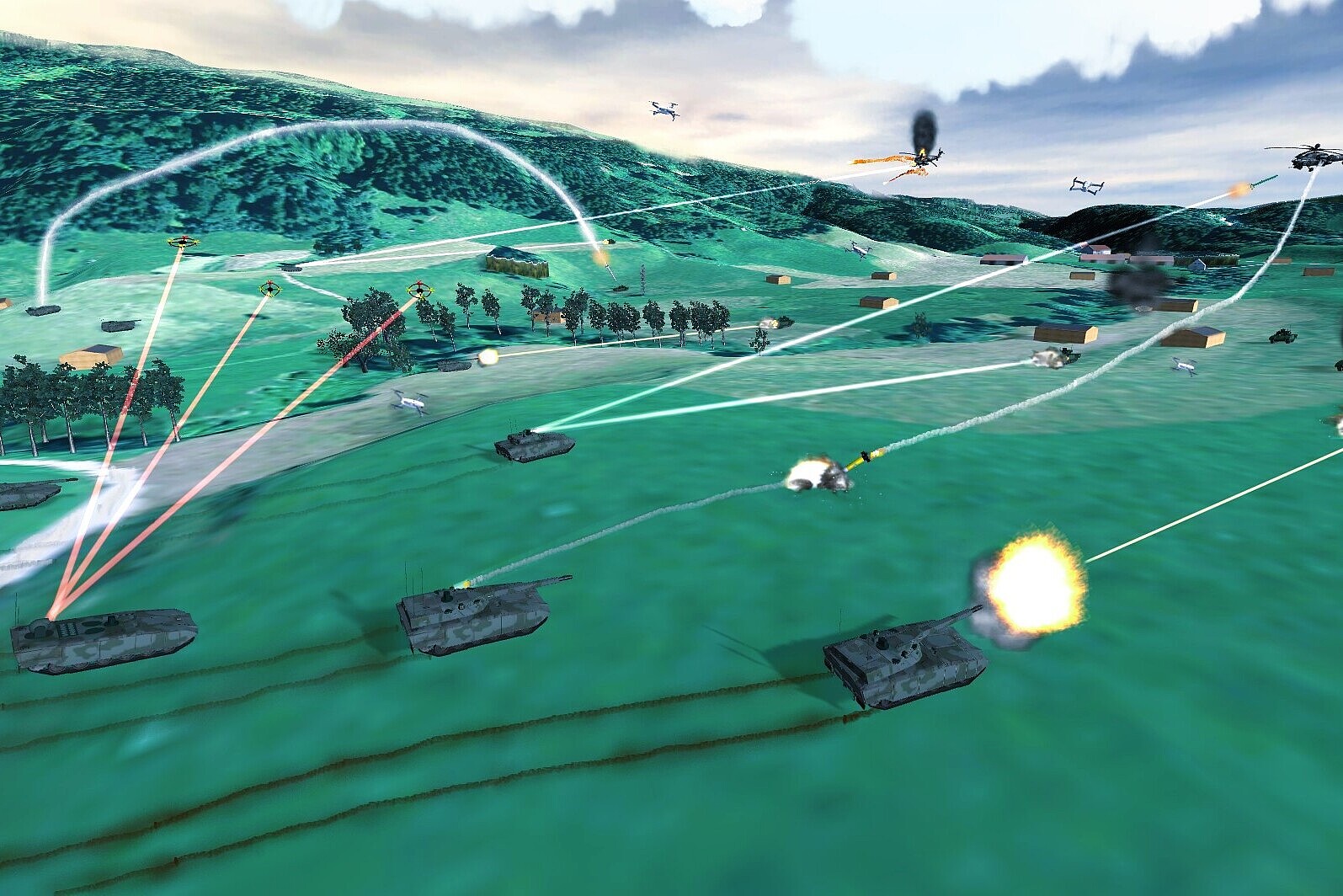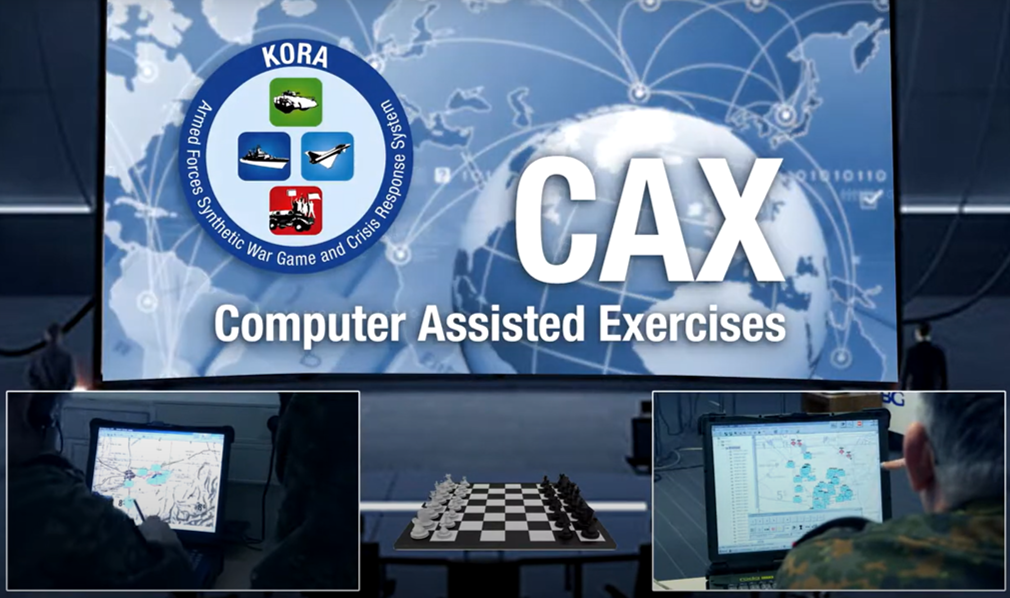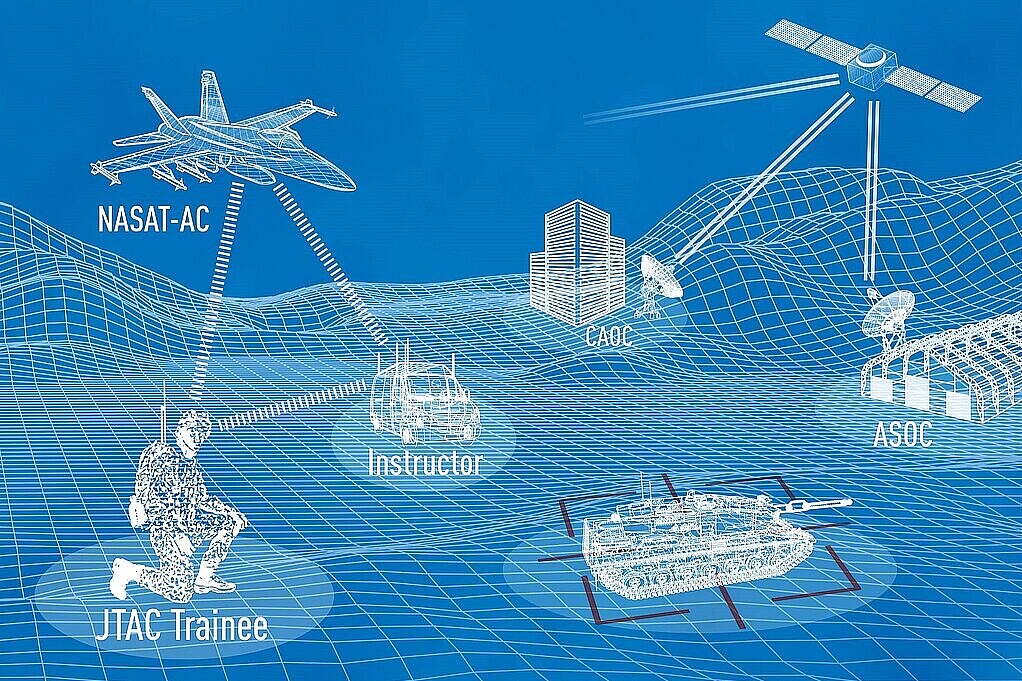- Home
- Industries
- Defence
- Software and system solutions
- Home
- Industries
- Defence
- Software and system solutions
Software and System Solutions
Our software and system solutions combine technological excellence with sound engineering expertise and an in-depth operational understanding of military realities. A key focus lies on simulation-based applications that cover a broad spectrum of operational scenarios – with the aim of supporting user organisations in preparing for current and future challenges.
They are based on model-based systems engineering (MBSE) and are implemented in a consistently vendor-independent manner. We combine highly realistic models with powerful simulations that support both AFAP (“As Fast As Possible”) and FTRT (“Faster Than Real Time”) – meeting future demands for speed and result quality.
Our systems represent strategic, operational, tactical and technical levels. In doing so, we draw not only on our long-standing experience in developing complex software systems, but also on the military expertise of our staff. As a reliable partner, we support user organisations throughout the entire lifecycle – from the initial concept idea to continuous enhancement and system maintenance.
Tailored Solutions for Your Challenges
Our simulation systems support operational support, capability development, mission evaluation as well as training, education, procurement and verification. We develop tactical simulations such as the JTAC Trainer, which integrates aircraft, unmanned systems and JTAC operators in a realistic virtual environment – enabling safe and practice-oriented training. In addition, we provide cross-domain battlefield simulations ranging from individual engagements to entire campaigns, complemented by AI-supported scenario generation and analytical tools for well-founded decision support.
In highly networked environments, our middleware solutions play a central role in integrating security-relevant systems. They form the foundation for essential functions within high-security cloud architectures. Developed in accordance with recognised standards, they consistently exclude inadequate approaches and enable armed forces and security authorities to exchange information seamlessly and securely.
MiDAS
MiDAS is an advanced debriefing tool that accurately records and analyzes Air Combat between different aircraft and weapon systems.
It enables coherent presentation of weapon system data to support operational testing and evaluation of decision-makers, exercise management and aircrew debriefing. The system provides the ability to display true and perceived data in simulation networks as well as the data retrieved from the weapon system platform.
MiDAS thus enables a detailed live display and subsequent professional evaluation, contributing to a fair and effective training environment.
JASS
The Joint Agent-based Simulation System (JASS) is our powerful and world-class wargaming tool for preparing, executing and analyzing simulations. This multi-agent simulation system represents joint and combined forces (both military and civilian) within natural and artificial environments. It can be run on a single computer or on multiple computers across different locations.
JASS offers interoperable services and automated networking capabilities. It enables system analyses in military and non-military scenarios, the development of force structures, the creation of detailed operational plans and the realization of effective training and exercises.
Due to its comprehensive concept, JASS can be used for operations research (e.g. development and analysis of force structures and operational plans), experiments and tests as well as for training and exercises.


KORA
KORA is the leading German constructive Simulation System for Command and Staff Training. It simulates all aspects of land, air and naval warfare missions, operations outside of war as well as disaster relief and crisis response operations. The KORA system covers all national and multinational defense and security capabilities.
KORA has its focus on training commanders and staffs at operational and tactical levels, making it a core capability that enables simulation-based exercises for multinational, joint and component command headquarters as well as headquarters at subordinate command levels such as corps, division, brigade, battalion and task force levels.
DaCAS/NASAT
Digitally-aided Close Air Support (DaCAS) is a digital data transmission and messaging process based on the Variable Message Format (VMF) that ensures reliable Close Air Support (CAS) missions. The CAS targeting process is a complex sequence of steps performed by the pilot and the JTAC through visual and manual data entry. The Navigation-based System for Aerial Targeting (NASAT) provided by the ATS supports this.
Armed forces of different nations with different training structures, whose first language is often not English, need to ensure coherent language communication. Due to its applicability across language barriers, DaCAS is extremely useful at international level and is being used in current conflicts. As a result, it has established itself as the global standard for CAS Exercises (CASEX).


How can we help you?
Please fill in the form and we will get in touch with you as soon as possible.
